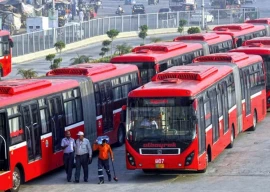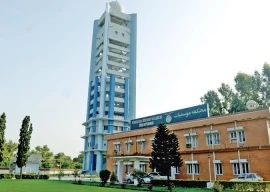
The Dubai-based airline, which started operations around 25 years back, currently operates 39 flights a week to the country and aims to focus more on Karachi – where it operates four flights a day.
“Pakistan holds great potential for us and we need to look at a long-term relationship,” said Majid Al Mualla, Senior Vice President Commercial Operations West Asia and Indian Ocean at Emirates during a panel interview in Dubai recently.
He said the airline faced restrictions in northern parts of Pakistan, including Islamabad, Lahore and Peshawar, because of limited facilities at airports, but Karachi could handle any type of aircraft. He was referring to the double-decked A380s, the largest passenger jet in the world, which the airline has planned to purchase in large numbers.
“Instead of creating hurdles, we need to improve the business climate and restructure. Passengers must have the choice to select the airline they prefer to travel on.”
Mualla admitted that Emirates enjoys healthy competition with Pakistan International Airlines (PIA) since both carriers offer similar fares. It is interesting to note that when the Dubai-based airline started operations in 1985, it had acquired two aircraft on lease from PIA.
Earlier this month, Emirates posted a net profit of $925 million for the first six months of the current financial year ended on September 30 because of growing consumer demand, supported by investment in new aircraft, products and customer service.
The figure marks a staggering increase of 351 per cent compared with the $205 million declared in profit for the same period in 2009.
Undeterred by the economic slowdown and political situation in Pakistan – a country where the airline receives 12 per cent of the region’s revenues, Mualla said Emirates did not pull out of any country due to difficult conditions.
He also dispelled the notion that the recent financial crisis that struck Dubai and forced a good number of Pakistanis to return back home has affected the airline’s business on the concerned route.
“It depends how you play your cards. When passenger traffic drops in an area we start focusing on other destinations like we did during the economic slowdown in Europe.”
New aircraft and fuel costs
The airline boasts a fleet of 152 aircraft and has ordered 201 new ones, including the Airbus A380 and the Boeing 777-300ER. The new planes, of which 20 A380s are expected to arrive by 2012, will cost over $68 billion but Emirates has not yet decided how it will pay for the purchase.
“Our books are open and financial position is strong. Funds are not a problem for us and we are considering how to finance the new orders,” said Mualla.
He said the biggest challenge for the carrier was expenditure on fuel – which accounts for 35 to 40 per cent of total costs. “A one dollar increase in oil prices causes a $1 billion impact on the entire aviation industry.” This is why the airline is focusing on the purchase of fuel-efficient planes.
Engineering services
Emirates has set up seven hangars at its engineering facility close to Dubai International Airport in an attempt to conduct regular maintenance and revamping work on the aircraft. The move is aimed at both: ensuring safety of passengers and longer life for the planes. “We also provide limited engineering services to other airlines at the facility,” added Bob Lunn, vice president of the airline’s engineering facilities.
He explained that during heavy maintenance engines, wings and tail of the aircraft are removed and the whole process (including refitting) takes around 40 days.
Older planes like the 777 are also revamped at the facility to meet the modern-day requirements. The facility, however, does not manufacture any spare parts – almost all of which are imported from abroad.
Published in The Express Tribune, November 12th, 2010.













1725096749-0/Untitled-design-(1)1725096749-0-270x192.webp)









COMMENTS (1)
Comments are moderated and generally will be posted if they are on-topic and not abusive.
For more information, please see our Comments FAQ